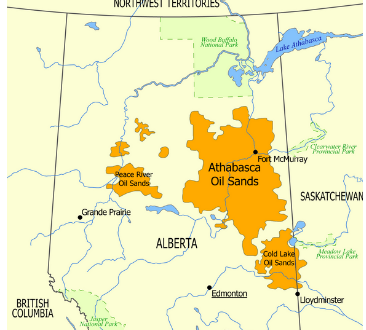Canadian oil sands production is set to enter a period of slower annual production growth compared to previous years. Nevertheless. total production is expected to reach nearly 4 MMbpd by 2030 – nearly one million more than today. according to a new 10-yr production forecast by business information provider IHS Markit.
IHS Markit expects average year-on-year supply additions to be below 100.000 bpd in the coming decade. By contrast. growth over the current decade regularly averaged additions in excess of 150.000 bpd.
Transportation constraints such as a lack of adequate pipeline capacity and the resulting sense of price insecurity in western Canada have weighed on new large scale incremental investments in the oil sands. said Kevin Birn. V.P.. IHS Markit – who heads the Oil Sands Dialogue.
Large scale oil sands projects take two. three. four or more years to be brought online and so the reality of a slower pace of investment and growth in the Canadian oil sands is taking shape. Birn said. Yet. ironically the call on Canadian heavy sour crude oil—the principal export from the Canadian oil sands—has never been greater as the rapid deterioration of Venezuelan output tightens the supply of heavy sour crude globally.
A fuller analysis of the new IHS Markit oil sands production forecast. authored by Kevin Birn is available at the IHS Markit energy blog.
IHS Markit not only expects the growth profile for oil sands to be different in the coming decade but the drivers of growth will also be fundamentally different. Future growth will mostly come from existing projects and facilities as opposed to new projects. according to the forecast.
The 10-yr forecast expects two-fifths of the anticipated rise in oil sands production to 2030 will come from ramp-up of projects in construction or recently completed. Nearly one-quarter of the growth will come from projects that are on hold but where some construction or site clearing has already begun and debottlenecking of existing operations. Less than one-third of anticipated growth is expected to come from new projects. IHS Markit says.
The shift towards more modest year-on-year gains had been expected to occur earlier. with IHS Markit anticipating that 2019 would be the pivot point. However. the decision by the Government of Alberta to artificially reduce output via a curtailment policy has deferred some of the anticipated production gains that would have occurred in 2019 to 2020.
Despite the forecast for slower rates of growth. there is still upside potential in the coming decade for the Canadian oil sands. Birn said.
The key to unlocking further upside growth potential in the Canadian oil sands will be the ability of the government and industry to restore confidence that the crude oil produced in western Canada can get to markets at a reasonable transportation cost. he said.
 Iran Energy News Oil, Gas, Petrochemical and Energy Field Specialized Channel
Iran Energy News Oil, Gas, Petrochemical and Energy Field Specialized Channel




